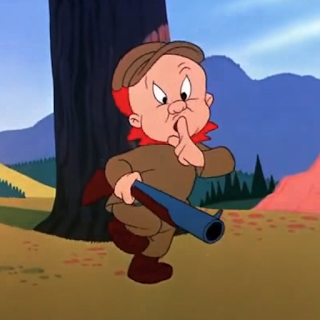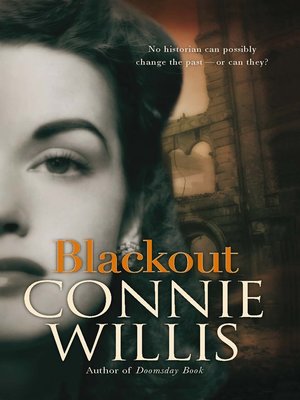I watch a lot of movies, thanks to Netflix and Amazon Prime, and mostly from my La-Z-Boy in the den. I usually prefer mysteries, thrillers, westerns, etc., and tend to avoid message-movies, superheroes, and foreign films--but in the right mood I'll give anything a try.
One of the things I find myself looking for in movies are little mistakes in either the plot or the filming that somehow slip through. I don't necessarily mind them, I just seem to notice them more, lately. Worse than film mistakes, I think, are errors in printed fiction; I look for those, too. But I'll get to that in a minute.
Here's a list of movie goofs that come to mind, goofs that I'm sure some of you have noticed yourselves. Some are tiny, some are glaring, and I suspect all are embarrassing to the filmmakers.
Just for fun . . . remember these?
North by Northwest -- In the cafeteria at Mount Rushmore, Eva Marie Saint pulls a gun and shoots Cary Grant--but several seconds beforehand, a young boy in the background (who's looking in the other direction and doesn't even see her) covers his ears in anticipation of the gunshot.
Casablanca -- Dooley Wilson (Sam) didn't know how to play the piano--so his hand movements never match the music.
Shane -- While Alan Ladd is talking to the little boy in the shed, a dark-colored car can be seen through the window in the distance, moving left to right. The movie is set in the 1860s.
Pulp Fiction -- In one scene a young man comes out of the bathroom and shoots at both John Travolta and Samuel L. Jackson (and misses)--but before the bathroom door even opens, several bullet holes are already there in the wall behind Travolta and Jackson.
Gladiator -- A metal gas canister is clearly visible underneath an overturned chariot in one of the battle scenes.
The Good, the Bad, and the Ugly -- Clint Eastwood and Eli Wallach use dynamite to blow up a bridge in the Civil War several years before dynamite was invented.
Gone With the Wind -- More of the same. GWTW featured several scenes using not-yet-invented lamps with cords. In one street sequence in Atlanta, there are lightbulbs in what should've been gas fixtures.
A Streetcar Named Desire -- In a scene with Marlon Brando and Kim Hunter, he's obviously mimicking her lines with his lips while she's speaking them.
Double Indemnity -- Fred MacMurray's character is a bachelor, but his real-life wedding ring is visible on his finger several times during the movie.
Never Been Kissed -- A sign made by the math club that Drew Barrymore joins features an incorrect value for Pi.
Vertigo -- Kim Novak loses a shoe in the water and then has both of them on right after that.
Rear Window -- An injured and stationary Jimmy Stewart, a photographer with an expensive telephoto-lens camera in his lap most of the time, never takes a single photo of the mystery scene or of the neighbor he suspects has committed a crime.
Psycho -- As Janet Leigh lies dead on the floor, her pupils are contracted when they should be dilated. (Afterward, ophthalmologists told Hitchcock there were eyedrops that could achieve that effect, and he used them for corpses in later movies.)
Star Wars -- At one point, a tall stormtrooper bumps his head against the top of a doorway.
Pretty Woman -- At breakfast, Julia Roberts is eating a croissant she's holding in her hand; a few seconds later she's holding and eating a pancake instead.
Ocean's Eleven -- More food problems. The container for Brad Pitt's shrimp cocktail changes from a glass to a plate, and then back to a glass again.
It's a Wonderful Life -- The angel reveals that Jimmy Stewart's brother died at the age of nine, but the birth/death dates on his gravestone say he was eight.
Willy Wonka and the Chocolate Factory -- The candy man accidentally whacks a little girl under the chin when he lifts a countertop.
Twister -- Debris from a tornado crashes through the windshield of a vehicle containing stormchasers Bill Paxton and Helen Hunt, but moments later the windshield is magically unbroken.
The Wizard of Oz -- When Judy Garland meets the Tin Man, she and the Scarecrow oil his rusty joints for him so he can move--even though tin doesn't rust. In the same movie, after the Scarecrow gets a brain, he states the Pythagorean theorem--incorrectly.
Braveheart -- A white van is visible in the background during a battle scene.
The Star Wars series -- Every single planet has the same gravitational force, which in reality would be almost impossible.
Quantum of Solace -- In one of the dock scenes, an extra with a pushbroom in the background behind Daniel Craig is sweeping the air several inches above the ground.
Titanic -- Leonardo DiCaprio mentions that he once went ice fishing on Lake Wissota, which wasn't formed until 1917. The Titanic sank in 1912.
The Great Gatsby -- DiCaprio enters a house soaked from the rain, but moments later his clothes and hair are completely dry.
The Aviator -- Leo again. As Howard Hughes in 1928, he requests ten chocolate chip cookies while editing his movie Hell's Angels. Chocolate chip cookies weren't around until two years later.
Grease -- A waitress tries to turn off a light switch with her elbow but misses it completely. Seconds later, the lights turn off anyway.
Hitch -- Will Smith has an allergic reaction that causes the left side of his fact to swell. Later the swelling switches to the right side.
The Karate Kid -- Ralph Macchio wins the final tournament by kicking his opponent in the head, even though such a thing is an illegal move and would be grounds for immediate disqualification.
Mean Girls -- Lindsey Lohan is from Africa in the movie, but there's a picture in her room of her riding an elephant with small ears (Indian) rather than large ears (African).
The Shawshank Redemption -- Tim Robbins's prison escape is via a tunnel covered by the famous movie poster of Raquel Welch in One Million Years B.C.--but that movie wasn't released until a year later.
American Sniper -- A fake baby is obviously substituted for a real one.
Spider-Man -- A mannequin is obviously substituted for Tobey Maguire when he rescues Kirsten Dunst and swings her to safety. (Her hair's even blowing in the wrong direction while they're in mid-swing.)
Harry Potter and the Sorcerer's Stone -- A metal bicycle seat can be seen on Daniel Radcliffe's broomstick during the Quidditch scene. Later, when he's debroomed, the seat's gone.
Back to the Future -- The guitar Michael J. Fox plays onstage in 1955 is a Gibson ES-345 model, with didn't exist until several years later.
Clueless -- Alicia Silverstone crashes into another vehicle during her driving test and knocks her side mirror off--but a few moments later the mirror's replaced.
You've Got Mail -- Tom Hanks puts an olive into his father's martini, the camera cuts to his father and back to Hanks, and he puts the same olive into the same martini.
The Lord of the Rings: The Fellowship of the Ring -- When Sean Astin and Elijah Wood walk across a field in the Shire, a car is clearly visible in the background.
Raiders of the Lost Ark -- As Harrison Ford sits at an outdoor table in Cairo in 1936, a man in modern clothes (a T-shirt and blue jeans) strolls by in the background. Also in Raiders, later in the movie, you can see the cobra's reflection in the glass that's separating it from Indy.
As silly as most of those are, I think it's even more humiliating to make mistakes in a novel or short story. (Probably because I myself am sometimes the guilty party.) There are many examples of this, but here are a few:
One of the Jesse Stone novels (I forget which one) by Robert B. Parker lapses at one point from third-person into first and back again. My guess is that this happened because all his Spenser novels were first-person.
One of the murders in the novel The Big Sleep was never solved, or even mentioned again. When asked years later about who killed the chauffeur, Raymond Chandler said, "Damned if I know."
In The Tommyknockers, a gun used by Stephen King's protagonist was an automatic at one point and a revolver a few pages later.
The 1631 King James version of the Holy Bible says, in Exodus 20:14, "Thou shalt commit adultery."
In Stranger in a Strange Land, Robert Heinlein has a character whose name switches back and forth between Agnes and Alice.
In the novel Harry Potter and the Philosopher's Stone, the Common Room is described as circular, but Ron and Lavender wind up in a "prominent corner" of the room.
The Story of Dr. Doolittle places orangutans in Africa, even though they're found only in Borneo and Sumatra.
There are many more of these, but the most painful mistakes for me are the ones I have made in my own writing. Most of them, thank God, I caught before the stories were submitted, but some of them were caught by editors who told me to correct them (embarrassing!), and a few made it all the way through to publication--in one I stupidly identified a horse as a mare and later tied "him" to a fencepost. The only good thing about mistakes that go all the way to print is that if/when you later sell the stories as reprints, you can correct them.
How about your own writing? Have you made any mistakes in grammar, structure, POV, character names, locations, plot, logic, etc., that wound up getting published anyway? Any that were particularly cringeworthy? How about movies you've watched? What are the worst goofs you can remember? Let me know in the comments section.
Meanwhile, if you're one of those folks who look for these kinds of errors . . . good hunting!
If you're one of those who commit them . . . well, go ye and sin no more.































